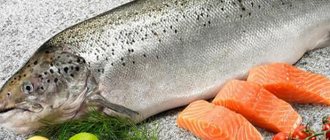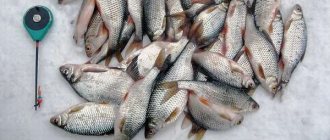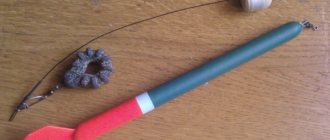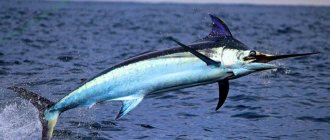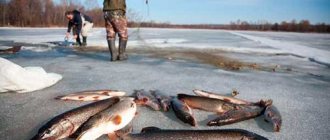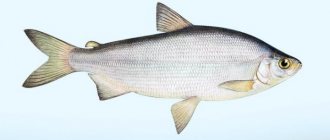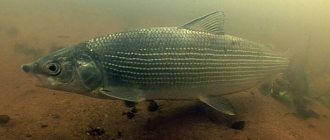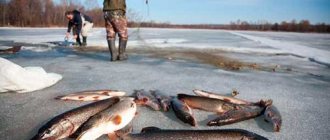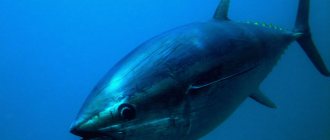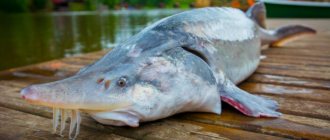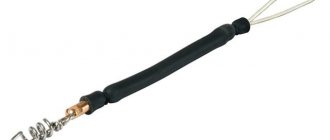Zander
This small fish is a predator and leads a predominantly school life. Its meat has excellent taste. Moreover, it is highly valued as it contains a large amount of beneficial amino acids. Pike perch can be recognized by their camouflage color. There are dark vertical stripes on the back.
The fish lives on the river bottom, in various pits. It loves clean water, so it does not settle in polluted places. It eats small fish, crustaceans and frogs. They catch pike perch with a spinning rod or a float rod using live bait. If you managed to catch this representative of the ichthyofauna, then you are very lucky.
Ide
Ide is the next fish of small species (you can find a photo of it in this article). The river inhabitant is similar to such representatives of the ichthyofauna as roach and chub. It has silvery scales, and with age its shade becomes darker. The ide is omnivorous and leads a gregarious lifestyle in the winter season. Found in various pools, under bridges. Representatives of this breed tolerate temperature changes well.
Pike
This freshwater fish is found almost everywhere. Prefers clean waters. The river must contain a lot of oxygen, since if there is a lack of this element, the pike dies. Representatives of this breed are quite large - their body length reaches one and a half meters. On average, individuals weigh about 3.5 kg. The head and body are elongated, which is why the pike is sometimes called an “underwater torpedo.”
The fish is a predator, eating fry, as well as representatives of small species, for example, roach. Its meat is considered dietary because it contains little fat. But the product is rich in proteins. These substances are quickly absorbed by the human body. You can prepare meat in several ways: bake, boil, fry, stew or stuff.
Beneficial properties and harm
The beneficial properties of whitefish are quite varied. It is characterized by a high fat content, which has a lot of vitamins and helps to normalize the functioning of many organs of the human body.
The fat found in fish will not be harmful to health, unlike the fat contained in animal meat. It is perfectly processed in the body and is ideal for people with diseases associated with the gastrointestinal tract.
Whitefish is highly valued in cooking, medicine and cosmetology. When planning a pregnancy, doctors advise including whitefish in a woman’s menu, since it contains a lot of folic acid, and by eating this fish, you can easily saturate the body with useful elements necessary for bearing a fetus. It is also very useful for children to consume this fish. It contains a large amount of vitamin D, which will strengthen the immune system and overall health, helping babies grow healthy and strong.
Read How to deliciously salt sockeye salmon
Due to its rich composition, doctors recommend consuming this fish in moderation for people who have:
- high blood pressure;
- thyroid diseases;
- vein blockage;
- varicose veins;
- inflammation and damage to the mucous membranes of the large intestine;
- tuberculosis;
- inflammation of the stomach.
For nervous system disorders (depressive state), you need to add this healthy fish to your diet. It contains iodine, which has a positive effect on the functioning of the endocrine system and protects against thyroid diseases.
An excellent way to recover after operations or serious illnesses is to add whitefish to your daily menu.
Whitefish caviar is very similar in taste and beneficial properties to salmon caviar. Very often it is called pink caviar.
Despite the fact that whitefish is very fatty, it has a fairly low calorie content. Therefore, it is recommended for use by people who have problems with excess weight.
If you have an individual intolerance or allergic reactions to seafood, eating this type of fish is contraindicated. It is also not recommended to add lightly salted or smoked fish to the diet, as infection with helminths is possible.
You need to be careful when choosing and purchasing fish. Sometimes you can find fish in markets contaminated with metals that are dangerous to the body. It is best to purchase fresh fish. A frozen product can be stored for a very long time on store shelves, which, when using such fish, can cause harm to your body and spoil the taste. Before eating, whitefish must be boiled, fried or subjected to any other heat treatment.
Moderate consumption of this type of fish will fill the body with useful substances, strengthen nails, promote good vision, and delight you with a very aromatic and delicate taste.
Roach
The list of common fish species includes roach. This fish lives in schools. The size of its body, as a rule, does not exceed 20 cm. It lives in quiet areas on the river bottom, most often choosing places overgrown with grass, since this is where it can easily hide from predators. It feeds on worms, crustaceans, larvae and eggs of other fish. You can catch it throughout the year.
All fish of the salmon family
Various fish of the salmon family have been described; list:
- Salmon. The main habitat of salmon is the White Sea. The length of an individual can be 1−1.5 m. The color of the scales is silver, the spots characteristic of salmon are weakly expressed. The diet is based on small fish. During the spawning period, the amount of food consumed is greatly reduced. During the breeding season, red and orange spots appear.
- Pink salmon. Pink salmon scales are small and silvery. The fins and head turn black before spawning. Males have a hump on their back, which is how the fish got its name. The length reaches 65−70 cm. The caviar is large: the diameter of 1 egg reaches 5−8 mm. Lives 3-4 years, after which it dies. It feeds on crustaceans, mollusks, and small fish. It is thermophilic, winters at temperatures not lower than +5°C.
- Chum salmon. There are no spots or stripes on the silvery scales of chum salmon, which are characteristic of other members of the family. During the breeding season it darkens, becomes almost black. Chum salmon is a commercial fish, the caviar is a large, reddish variety.
- Taimen is a freshwater fish from the salmon family; the only anadromous subspecies is the Sakhalin one. Taimen salmon is the largest representative of the family.
- Sockeye salmon is a fish from the Far Eastern salmon family. It grows up to 70−80 cm. The eggs are small, 4−5 mm in diameter. The diet is based on small crustaceans. According to the timing of spawning, summer and spring varieties are divided.
- Trout. There are 3 subspecies of trout: rainbow, lake and brook. Spots on her body appear in cases where the diet is poor. Can live in salt and fresh water.
- Chinook salmon are the largest species found in the Pacific Ocean. Its length varies between 85 cm and 90 cm. There are more than 15 gill rays. It is found off the coast of North America and swims to the rivers of Kamchatka to spawn. Lives no more than 7 years, more often - 4-5 years. Breeds from June to August.
- Nelma. Belonging to the whitefish subfamily, nelma is a freshwater species. Its dimensions can reach up to 1.3 m, body weight - up to 30 kg. It rarely swims into the sea and tries to stay in desalinated areas.
- Loach. Loaches are common in Kamchatka and Magadan. Their scales are small. They can be either walk-through or residential. In some species, spawning takes place in still water.
Rudd
Rudd can easily be confused with roach. However, compared to the fish discussed in the previous section, it has a more attractive appearance. The average body length is 51 cm, weight is approximately 2.5 kg. The rudd lives in fresh water bodies flowing into the Black, Azov, Caspian and Aral seas. The diet includes food of animal and plant origin, a favorite dish is caviar of shellfish. Fish meat contains a large number of useful micro- and macroelements, including chromium and phosphorus, proteins and fats, as well as vitamin P.
Spawning
Sexual maturity in this beautiful and strong fish occurs at two to three years of age, although some subspecies begin to spawn later, in the fourth or even sixth years of life. To spawn, migratory subspecies rise from the seas to freshwater rivers, and lake or river subspecies rise to the upper reaches of tributaries.
Whitefish spawn in the fall; depending on the region, this can be either September or November, the main thing is that the water temperature is from one and a half to five degrees Celsius. The eggs lie in deep holes and quiet places in rivers until spring; the fry begin to hatch only when the water warms.
Read Techniques for fishing with unloaded silicone
Vobla
Partial fish species are breeds that are widely used in the food industry. For example, vobla is known to every beer lover, because it is often served with this drink in dried and dried form. Representatives of this breed are not much larger than roaches, their body length reaches 30 cm, but these two varieties are easily confused. Vobla, unlike roach, can be found both in fresh water bodies, namely in the Volga, and in the Caspian Sea.
Description of fish of the salmon family
Numerous representatives of this family are divided, in turn, into several subfamilies: salmon, whitefish and grayling.
Appearance
Scientists believe that these fish appeared back in the Cretaceous period, in the Mesozoic era. Now, in their form, representatives of this family are close to the herring-like ones.
In length, salmon reach from several tens of centimeters to two to two and a half meters. The longest representative of the fish of this family is the whitefish. The mass of fish from the salmon family can reach several tens of kilograms.
Thus, some especially chinook salmon, taimen or salmon can grow to a weight of 60-100 kilograms. Salmon usually live for several years, on average about 10, although there are also long-livers who live up to 40-50 years. The latter include, for example, taimen.
The body of these fish is compressed at the sides and highly elongated. The scales are round, the fins are located in the middle of the abdomen and are not spiny. Also, one of the distinctive features of salmon is its small adipose fin. In salmonids, the swim bladder is connected to the esophagus using a canal, and the skeleton in some representatives of this family is not completely ossified - for example, the skull is cartilage.
Habitat
Representatives of salmon are found both in the seas and oceans - Pacific and Atlantic, and in fresh water bodies. They are found in large numbers in Europe and Northern Asia, in fresh water bodies in the north of the African continent and the North American continent.
Note: salmon in the wild live exclusively in the northern hemisphere of the earth. But in the southern hemisphere, representatives of this family can only be found in artificial reservoirs and fish farms.
In the Russian Federation, salmon are often found in the Far East - near the shores of Kamchatka, the Kuril Islands, and near Sakhalin. Fishing for these types of fish is organized here.
Spawning
Representatives of salmon living in the seas and oceans go into the fresh water of rivers and streams during the breeding season, therefore they are so-called migratory fish. However, some of them initially live in fresh water bodies, most often in lakes.
It is interesting that these fish go to spawn exactly in those places where they themselves emerged from eggs some time ago (usually this happens in the second or third year of life)
At the same time, most migratory fish of this family come to spawn only once in their entire lives, and after the breeding season ends, they die. This is most clearly noticeable in salmon living in the Pacific Ocean - pink salmon, chum salmon, sockeye salmon, and so on. But among the salmon that live in the Atlantic (their most prominent representative is salmon), not all fish die after spawning, while some can spawn up to 4-5 times during their lives.
During the breeding season, the shape of salmon changes, and the color becomes bright and saturated. They also have bright spots of red or black color, and some males “grow” a hump (this is where, for example, pink salmon got their name). In general, these fish quite easily and often change their color and appearance - it all depends on the environment.
Perch
This fish lives only in clean waters. It is found in rivers, lakes, ponds and reservoirs. Perch is one of the most common aquatic predators. It cannot be found in places with muddy and dirty water. They catch fish using thin gear.
The massive body of the perch is slightly flattened laterally. And the main distinguishing feature is its unusual coloring, which depends on the area. The back can be dark green, the sides are most often yellow-green. The combination of these colors with orange eyes gives the bass a unique appearance.
Stellate sturgeon
A small breed of fish - stellate sturgeon - is listed in the Red Book, so it is grown artificially. Some individuals reach a length of 220 cm. The body of the fish is slightly flattened, with antennae located on the muzzle. Representatives of this breed lead a bottom-dwelling lifestyle. Their diet includes crustaceans, herring, and invertebrates. Stellate sturgeon meat has good taste.
Caviar
Caviar from small fish species is the most valuable product that industrialists obtain from their catch. You can prepare it in several ways. Before salting, the caviar is passed through a special sieve, with the help of which it is cleared of the film. They say about this product: “Punch caviar.” After salting, you can add a little vegetable oil to it, then the particles will not stick to each other and the product will become grainy. You can pour the caviar with brine heated to 40 °C, after which excess moisture is removed using a press. As a result, pressed caviar is obtained. The most popular caviar is bream, pike perch, roach and pike.
Yastyk
Caviar of small fish species is the most high-calorie product that industrialists obtain from the catch. You can cook it in several ways. Before salting, the caviar is passed through a special sieve, with the help of which it is cleared from the film. They say about this product: “Breakout caviar.” After salting, you can add one drop of vegetable oil to it, then the particles will not connect with each other, and the product will become grainy. It is allowed to pour the caviar with brine heated to 40 °C, after which the excess moisture is removed using a press. As a result, pressed caviar is obtained. The most popular are the muscles of bream, pike perch, roach and pike.
Share the link and your bros will know that health is at your core. Thank youツ
